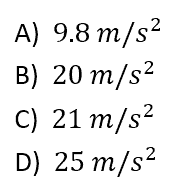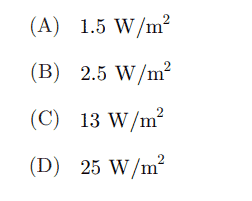In this article (and video above), we determine reactions at supports for beams and frames. In this scenario, we analyze a beam supported by a pin at A and a roller at B, carrying various loads.
Question:
Consider the beam shown below. It is supported by a pin at A and a roller at B. It carries a distributed load as shown, spanning a distance of 3 meters from the beam’s left end. Additionally, it carries a concentrated load of 6 kN at its right end. Determine the reactions at A and B.
Explanation:
Draw the free-body diagram of the beam using equivalent forces:
Incorporate support reactions Ay and By. Omit extra x-direction force at A (pin support). Add 6kN concentrated load at the beam’s far-right end. Simplify distributed loads by converting them to equivalent point loads, preserving the original load’s impact on the beam.
Initiate the inspection by focusing on the far-left end of the beam. Examine the uniformly varying load, noting its gradual increase from zero at the left end to a maximum of 2kN/m along the beam.
Compute the equivalent load for the section by finding the area under the triangular curve. Using the formula for a triangle (half base times height) with a 1-meter base and 2 kN/m height, the result is a 1 kN point load. Consider the specific point where this force is applied for a comprehensive understanding.
To find the centroid of a right triangle, connect each vertex to the midpoint of the opposite side with medians. The centroid, acting as the balance point, is consistently located at two-thirds the length of the base from the angle opposite the right angle. This straightforward method simplifies geometric analysis.
The equivalent 1kN point force would act at a distance of 2/3 meters from the left side of the beam.
Proceed to the next step by addressing the rectangular distributed load. Calculate its equivalent point load using the same procedure as previously outlined.
Calculate the area under the rectangular curve to determine the 4kN equivalent load. Due to symmetry, place the equivalent point load at the rectangle’s center, located 2 meters from the left side of the beam.
Incorporate the final equivalent force into the free-body diagram and proceed to calculate reaction forces at supports A and B. A correct diagram ensures a straightforward calculation process.
Initiate the analysis with a force balance in the y-direction for the static beam, setting the sum of forces to zero. Formulate the equation: Force Ay + By – 1 – 4 – 6 = 0, simplified to Force Ay + By – 11 = 0. To resolve the two unknowns, introduce a moment balance about point A.
Designate anti-clockwise as the positive moment direction. Factor in the 1kN force at one-third of a meter from A (add 1/3), and the 4kN force at 1 meter causing a CLOCKWISE moment (subtract 4). Incorporate force By(2) positively and subtract 6(3). Confirm the resultant sum equals zero for equilibrium.
Equation 2 has been successfully solved, revealing that the value of reaction By is 10.833 kN.
Finally, the reaction By can be substituted into equation 1, revealing that Ay is equal to 0.167 kN.
Answer:
The correct answer is A.
Final Remarks:
- Draw a clear and accurate free-body diagram
- Identify the type of supports (pin, roller, fixed).
- Apply the equations of equilibrium carefully.
- Consider different loading conditions and beam configurations for practice.
This Episode Is Brought to You by PPI
PPI
I hope you found this article helpful. In upcoming articles, I will solve some more PE exam practice problems and answer other questions from our subscribers. Pass the PE Exam videos will publish weekly, so be sure to click the subscribe button so you don’t miss something that could make a substantial difference in your exam result.
Lastly, I encourage you to ask questions in the comments of this video, or on this page and I’ll read and respond to them in future videos. So, if there’s a specific topic you want me to cover or answer, we have you covered.
I’ll see you next week… on Pass the FE Exam
Anthony Fasano, P.E.
Engineering Management Institute
Author of Engineer Your Own Success




















